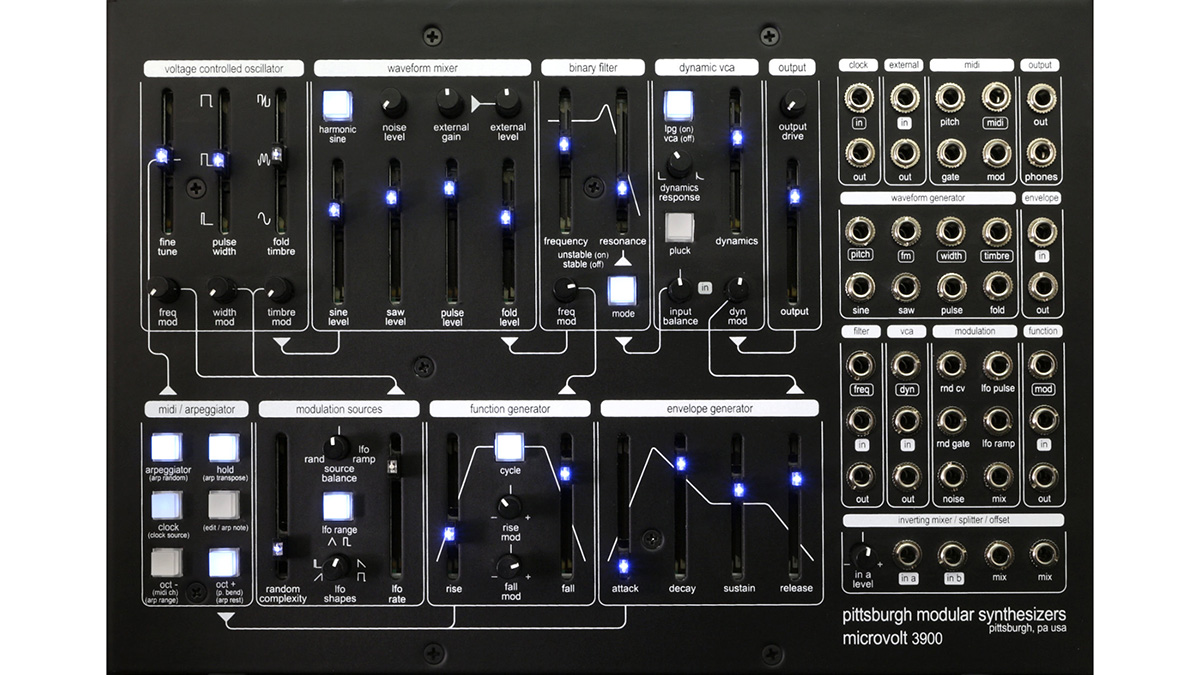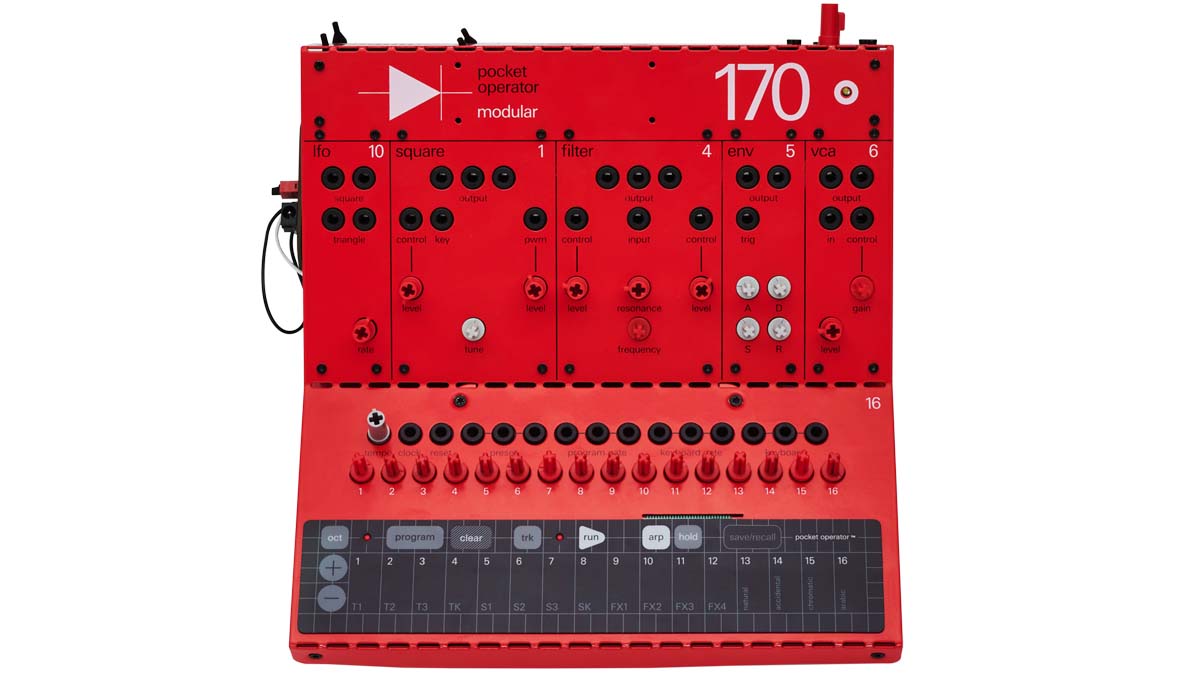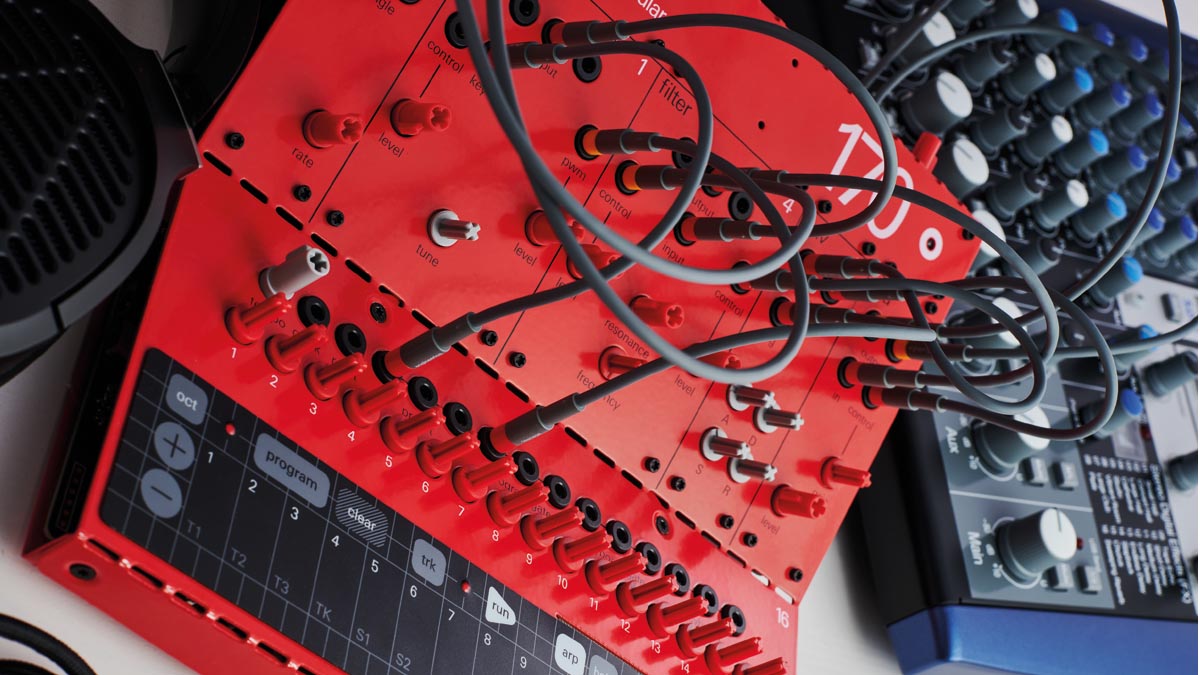MusicRadar Verdict
The modular concept here is intriguing, but it’s sadly let down by patchy execution and a price that feels tough to justify.
Pros
- +
Looks great.
- +
Synth elements sound good.
- +
The POM-16 sequencer is a powerful tool.
Cons
- -
Some components fit together poorly and have been unreliable in our tests.
- -
Synth elements are fairly basic.
- -
It’s hard to justify that £400 price for a DIY kit.
MusicRadar's got your back
What is it?
The mid-level offering in Teenage Engineering’s new DIY range of modular Pocket Operators, the POM-170 is a self-contained instrument that combines the POM-16 sequencer with five modules that form a fairly straightforward monosynth.
As with its siblings, the 170 comes flat-packed, requiring a basic, if slightly long-winded, self-assembly. The metal chassis itself is folded into shape and the module elements are slotted and screwed into place. In theory, even those with no electronics experience should be able to handle the build.
We did have a few issues that slowed us down, including a few fiddly elements that didn’t seem to fit into place naturally and a certain amount of confusion caused by disjointed and at times unclear instructions.
It’s also worth being aware of the fact that the build uses proprietary screws and tools, and there are no spares in case any of these go missing while you’re working.
The 170 feels like it’s flirting with, rather than committing to, its modular nature
Despite taking a little longer than expected, the whole process is ultimately satisfying, leaving a nice sense of achievement and ownership even before you turn the instrument on.
The resulting synth looks great with its eye-catching red faceplate and classic angled design.
Performance and verdict
In terms of feel though, there’s undeniably something ‘DIY’ about the POM-170; the patch points and controls, while not necessarily loose, have more give than you’d get with a pre-built synth, and the uncapped rotaries are a little fiddly and imprecise. We’ve also had issues with the Arp and Hold buttons on our 170’s keyboard not working.
The lower element of the 170 is a straight copy of the POM-16 sequencer , and with its multiple tracks and preset saving it remains the most interesting element of the range. The remaining modules offer an LFO with two square and two triangle outputs, a square wave oscillator with PWM, a resonant low-pass filter, ADSR envelope, amp and speaker/output.

• Pittsburgh Modular Microvolt 3900
A characterful semi-modular that wears its influences on its sleeve, but still manages to have its own unique style and sound.
• Teenage Engineering POM-400
You may not end up using it as much as the price deserves, but it’s a curiosity that demands attention. It looks great, it’s versatile, has loads of modulation options and a fat, varied sound.
The elements themselves are decent-sounding but offer little that deviates from a basic monosynth setup. The highlight is the audio-rate LFO that can be patched to create gritty oscillator or filter modulation effects.
There’s fun to be had patching the sequencer’s multiple tracks to the different modulation inputs too, but on the whole the 170 feels like it’s flirting with, rather than fully committing to, its modular nature. A few additional patch inputs or a utility to combine/divide signals would be a good addition.
These elements would make a good introductory tool to form a more complex modular system though; a beginner-friendly way to convert the modules for Eurorack installation would certainly add appeal.
We really wanted to buy into TE’s compact modular concept, but sadly the delivery isn’t convincing. Teenage’s own website describes the PO Modular range by saying “we have compromised on everything except sound quality”, which sounds right, but then why aren’t these compromises reflected in price?
As a sub-£200 DIY project, the POM-170 could be charming – although unclear instructions and unreliable components remain troubling – but, at £400, there’s no getting around the fact that there are numerous better value and considerably more interesting options out there.
MusicRadar verdict: The modular concept here is intriguing, but it’s sadly let down by patchy execution and a price that feels tough to justify.
The web says
"Teenage Engineering’s Pocket Operator Modular 170 is an exciting and rather alternative entry into the world of analog synthesis... The cryptic nature of the construction notes and the extreme fiddliness of some components fade into the past once you start using the instrument."
Synth and Software
Hands-on demos
Teenage Engineering
Perfect Circuit
Specifications

- Type: Modular monosynth with four-track CV/MIDI sequencer
- Key features: Programmable sequencer, self-build kit with powder-coated aluminium chassis, keyboard, oscillator, filter, envelope, LFO, VCA, speaker, 8 patch cables, and illustrated build guide
- Contact: Teenage Engineering
I'm the Managing Editor of Music Technology at MusicRadar and former Editor-in-Chief of Future Music, Computer Music and Electronic Musician. I've been messing around with music tech in various forms for over two decades. I've also spent the last 10 years forgetting how to play guitar. Find me in the chillout room at raves complaining that it's past my bedtime.
“Delivers streamlined DAW integration with an excellent hammer action keyboard”: Arturia Keylab 88 Mk3 review
“I have an original 909 – every time I try to use it I feel like I’m ruining it”: House hero Riva Starr on his studio essentials and his love of analogue synths
“A synthesizer that is both easy to use and fun to play whilst maintaining a decent degree of programming depth and flexibility”: PWM Mantis review










